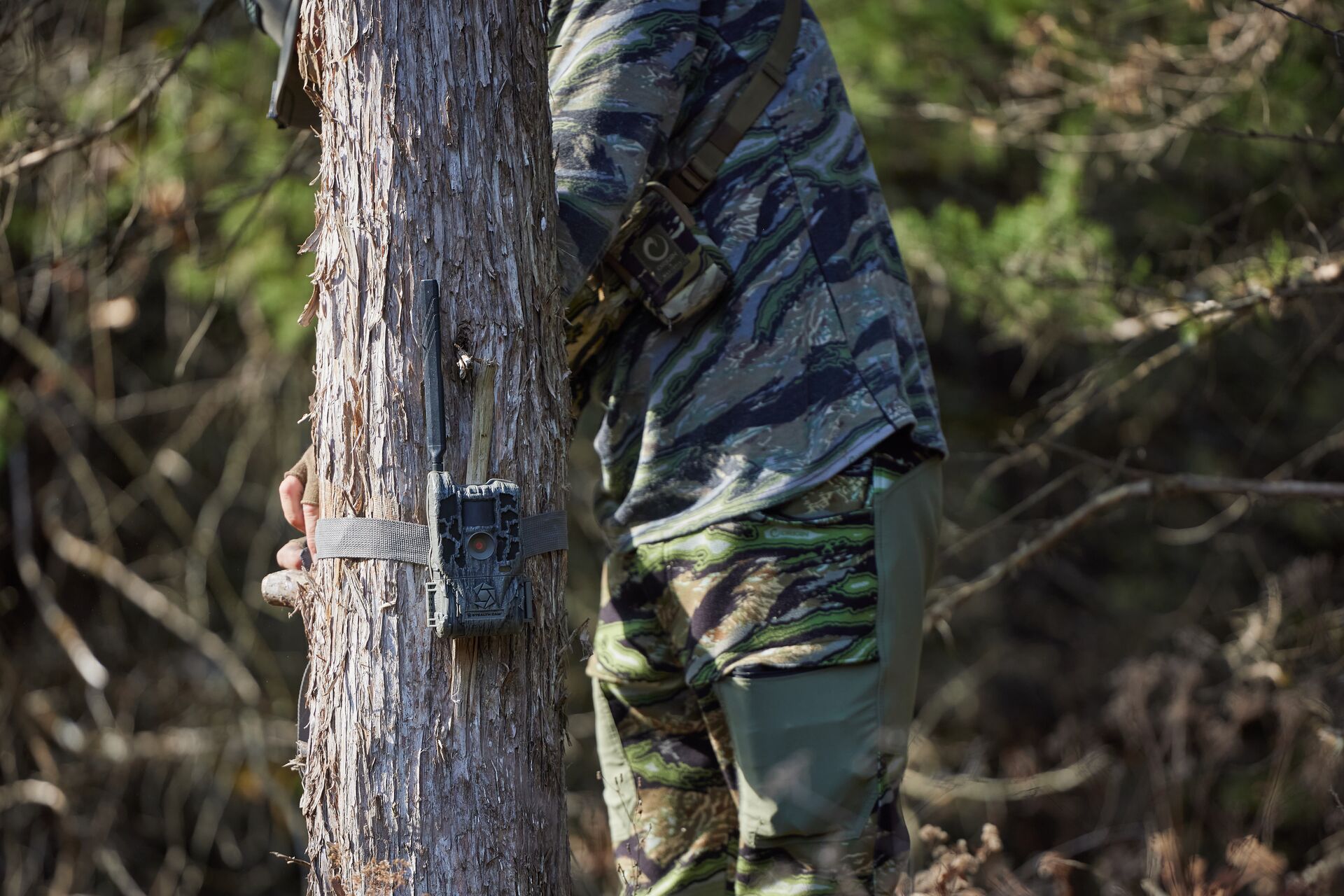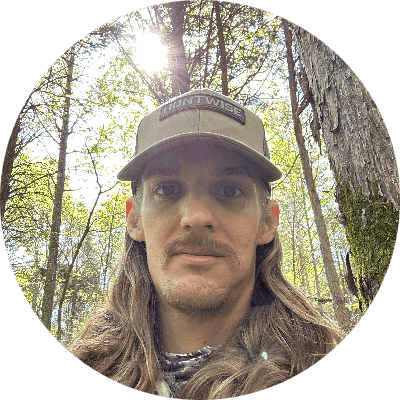Many factors come into play when placing a trail camera. Sure, you can randomly throw one up on a trail and receive pictures of the game — but understanding your target species first can increase your overall odds for success.
Today, I'll share some of the tactics I use for potential trail camera placement.

Why Use a Trail Cam?
There are plenty of good reasons to use trail cams as part of your hunting strategy. One of the best reasons is simply because cameras help you monitor deer movement patterns.
Learning how deer move through the land you plan to hunt helps you anticipate where they'll be when it's time to get out in the field. This crucial insight from real pictures of deer (along with animal movement projections you get in the HuntWise app) helps you become more efficient when you get out for a hunt.
Knowing where and when to be out in your stand means you spend less time tracking to bring home a buck.
Stand and Blind Placement
Using trail cams also helps you identify the best spots for your stand or blind.
Seeing where deer travel through a piece of land helps you know where to put your stand (and spots to avoid). Whether you put a stand up during the off-season and leave it for the hunting season or you bring in a stand on the days you hunt, having trail camera footage of deer movement can help you pick a winning spot vs. a location that doesn't help you yield a harvest.
Identify Changes in Behaviors
Your trail cam placement in the fall may be different than during the spring. Moving your cams helps you track changes in deer movement patterns or behavior so you have a better year-round view of how deer travel through specific plots of land.
Again, this knowledge is crucial and can help give you an edge over other hunters who don't use cameras (or HuntWise) to level up their hunts.
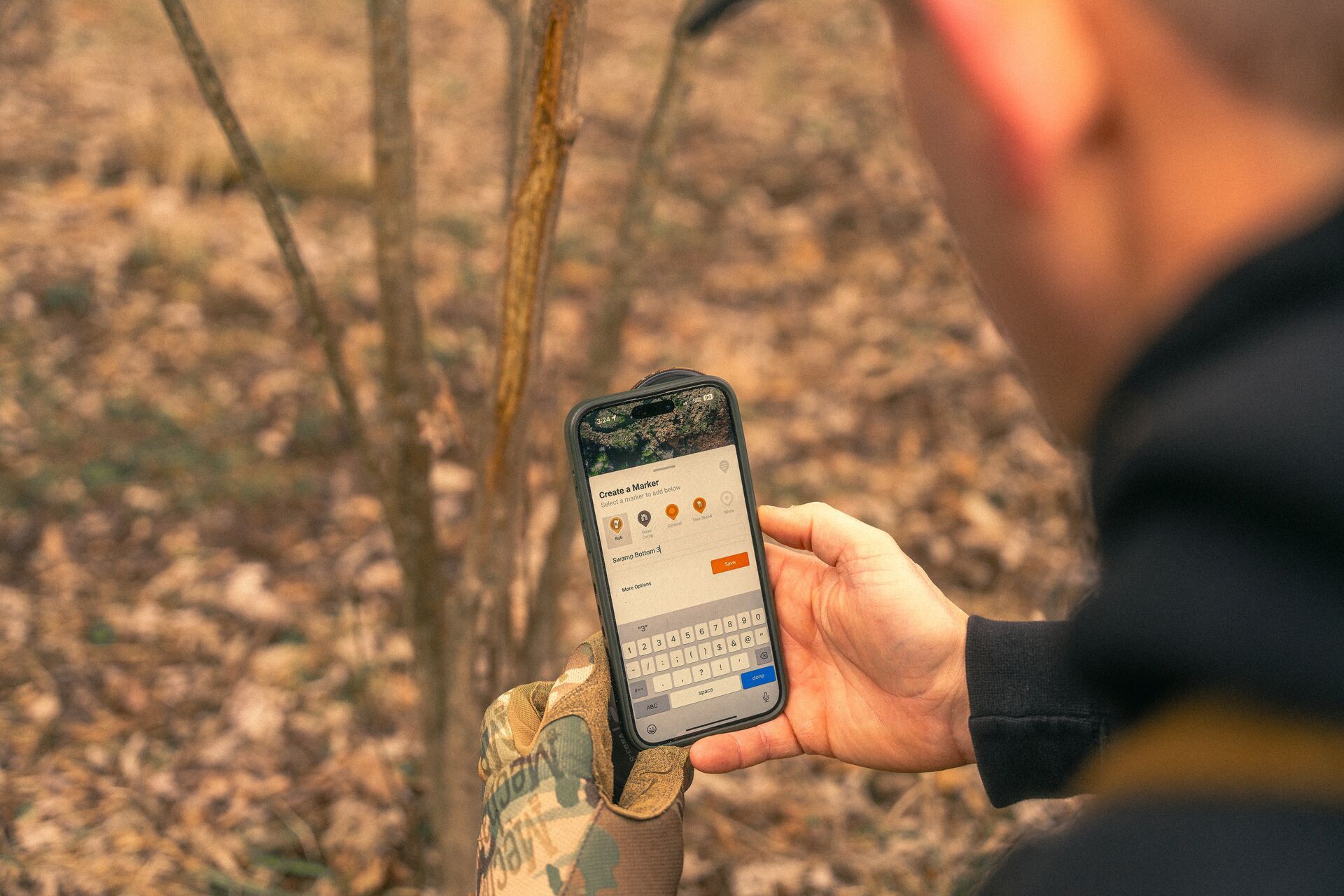
How to Set Up a Trail Camera for Better Fall Hunts
So, where should you put a trail cam to inform your fall hunts?
My first plan of attack is to open the HuntWise app. Scouting potential hunting grounds on the app's map using various layers can save countless hours from just blundering around through the woods to pick a camera location.
Always consider what the adjoining properties have to offer as well. Do those lands offer any agriculture, water sources, cover, CRP fields, pastures, orchards, swamps, or any other great habitat? These factors can influence where to place trail cameras.
Once you've selected a hunting parcel that appears appealing, start dropping pins in the app on those points of interest. I like to mark what I believe to be bedding areas, food and water sources, pinch points, cover, and access areas.
Get Boots on the Ground
When you've established those areas, it's time to venture out with some boots and permethrin-treated clothing and lay your eyes on the area in person.
Investigate the points where you dropped pins and look for deer sign on the way and in between. However, don't get discouraged if what you thought would be a great spot ends up being a bust. That is just part of it sometimes, and it even happens to me from time to time.
While investigating a plot of land, follow the sign, both big and small, establishing new pins along the way. That small sign may lead you to even better sign, while that great sign may lead you to very little sign.
For example, follow rub lines, dropping pins on each one. Look for beds and mark those as well.
Let's say you just happened upon a heavily traveled trail; don't just overlook it. Follow that one out! Mark the trail with pins ever so often, dropping one every one hundred yards, give or take.
Place a Camera
Then, when sign of great interest presents itself, throw a camera around a tree.
Try to get out no later than one month before the opening day of your hunting season. It's best to start early.
As the old saying goes, "The early bird gets the worm." Doing this helps you gain a good understanding of what resides on the property and become familiar with the land before you head out for a hunt. Getting a camera up early also helps you gain an advantage over other hunters.
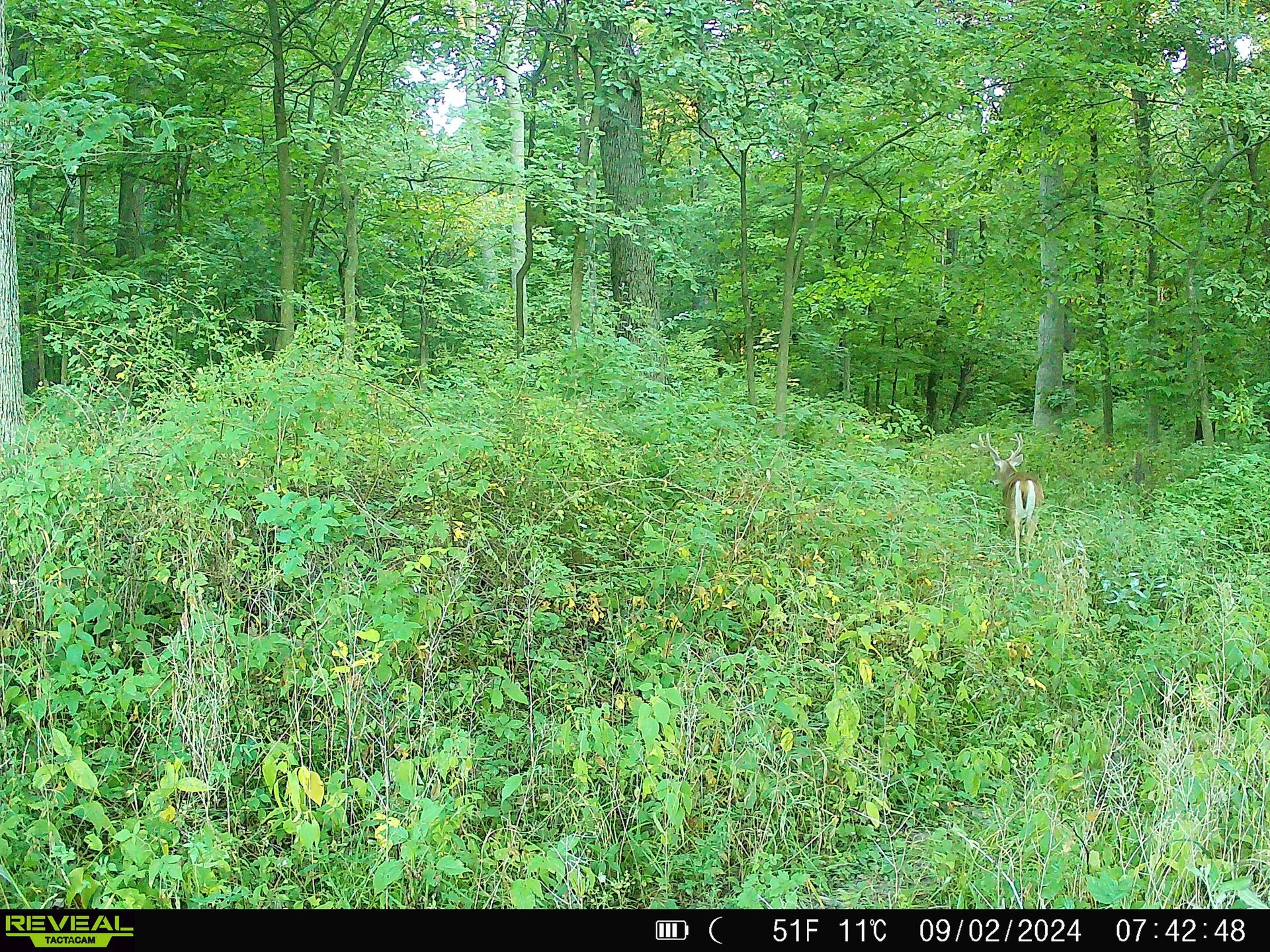
What to Do When You Capture a Pic
If you do happen to get a picture of an animal you're interested in pursuing, don't just sit idle. It's time for more research.
Is the animal in question on one camera, a few cameras, or on all of them? If the answer is "on all of them," then leave the area alone to start studying the map. Take note of how often it travels between your cameras, what time of day the photos are taken, the weather, the moon phase, visited food sources, and other potential reasons why it might be on your cameras.
However, you might want to move your cameras around if you're only receiving nighttime photos of the target animal. The best situation to be in is having daytime pictures. The same rules apply as well if you have zero to very few photos of an animal of interest. Move those cameras around and continue to scout some more until you start seeing some results.
Bucks Can Be Elusive (But Don't Give Up)
I discovered a buck during the late summer of 2022. Fast forward to last fall, and I have yet to lay my eyes on him in person. He's a public land ghost that has evaded every attempt of mine, excluding my trail cameras.
My HuntWise app looks like I've used it for sighting in my turkey hunting gun for all of the pins that are dropped in this location! This buck is so intelligent that once I get him on camera, he completely avoids the trail camera on which he was recently captured. It has become nothing more than a game of cat and mouse between him and me, with him being the victor for the past three seasons.
It's gotten so bad that I've recruited a close friend to aid in this buck's departure. As far as we know, he still roams the public as I type this. Maybe this fall is the fall when we get him!

Use HuntWise for Better Scouting and Trail Camera Placement
Hopefully, you have found some of this to be useful information to apply to your trail camera strategy. Knowing how to set up a trail camera the right way takes some practice, but it's well worth the effort when you get consistent information about where and how deer travel through the land you plan to hunt.
I wish you all the luck and success in the world for the upcoming season! Make sure you've downloaded HuntWise now to help you plot your camera locations and plan your fall hunts.
Download the app and explore it free for your first week!

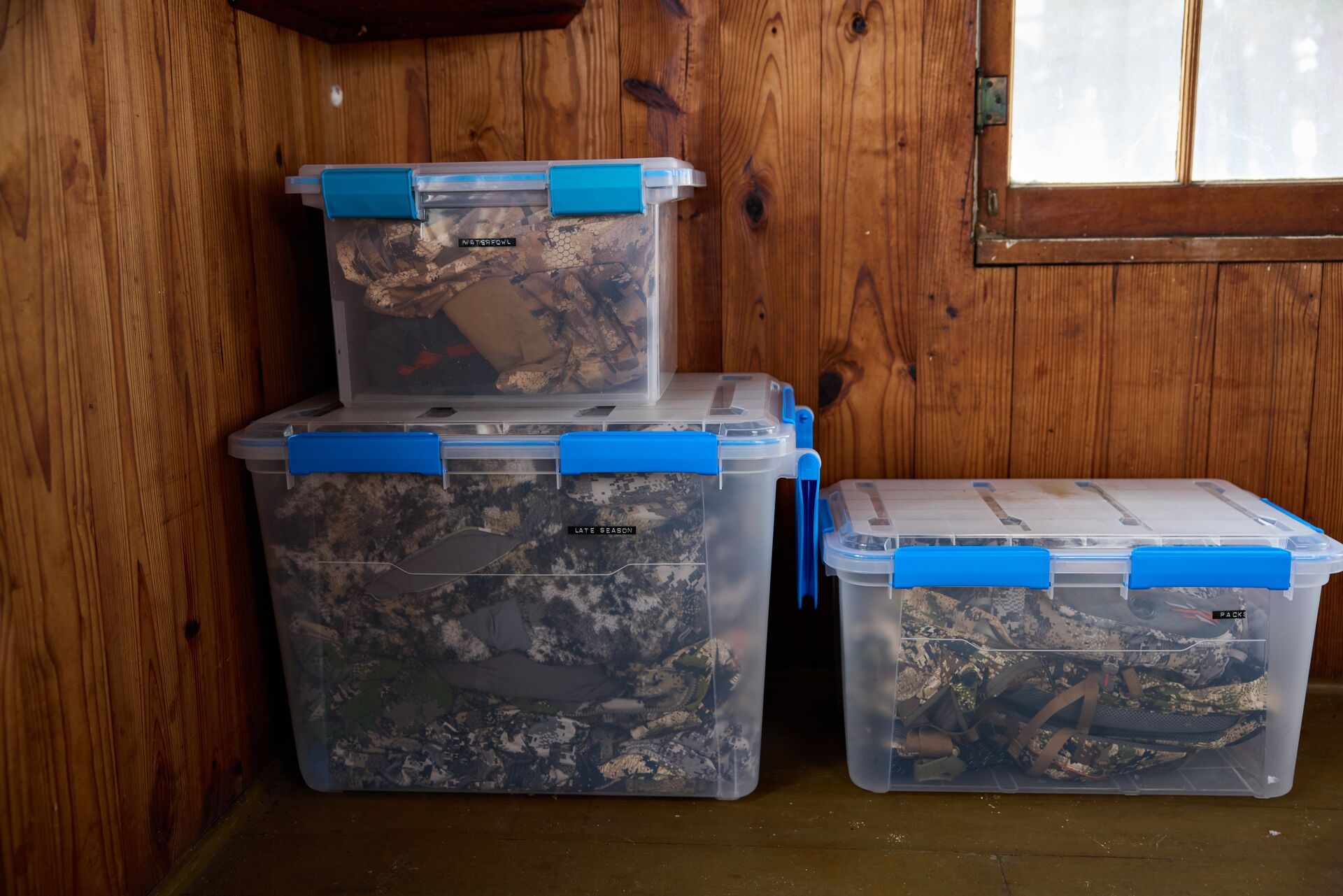
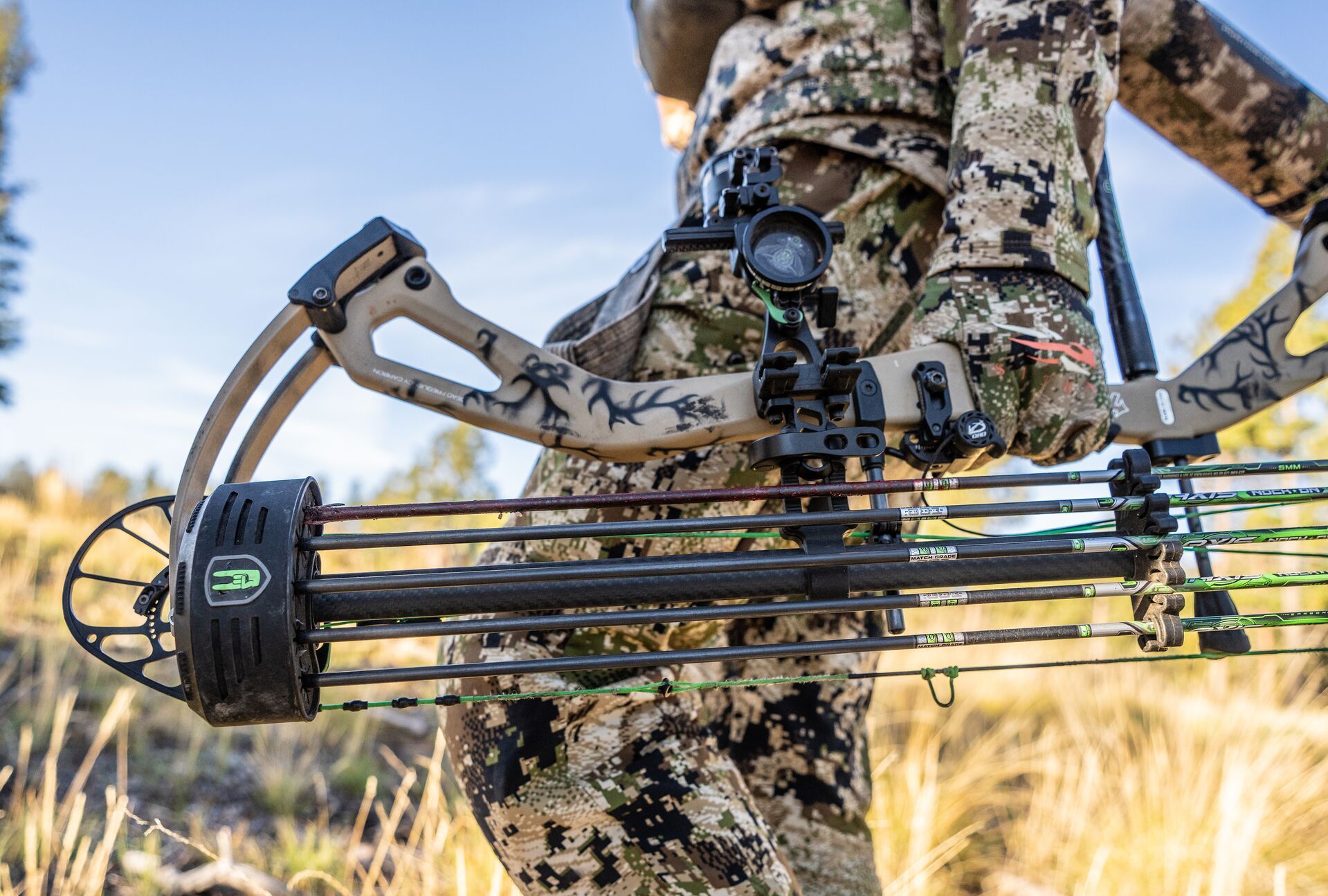
 Gear
Gear Gear
Gear Gear
Gear